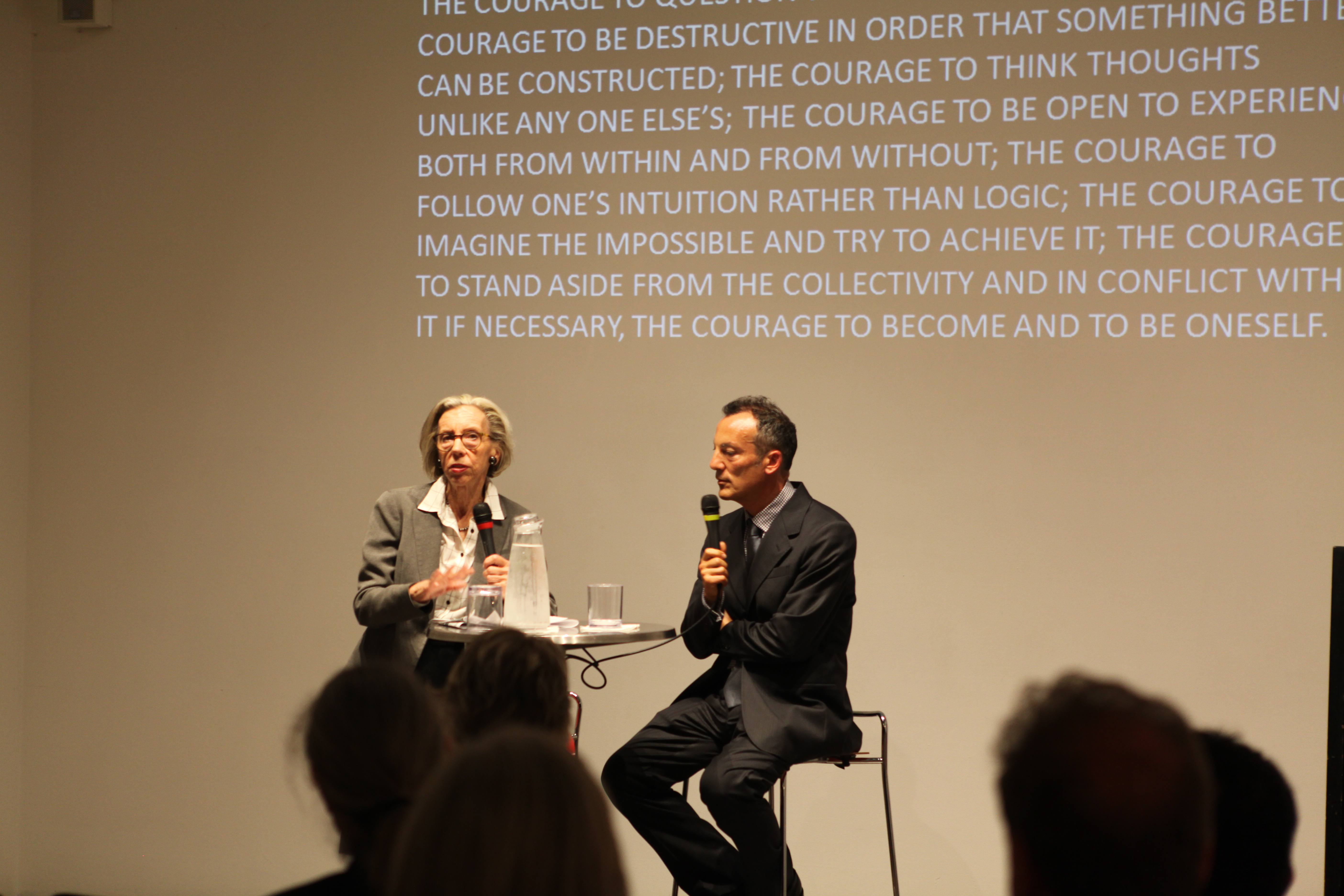by: ac
Pierluigi Serraino’s presentation of his fascinating new book, The Creative Architect: Inside the Great Mid-Century Personality Study, held at the Center for Architecture on 10.10.16, was a model of clarity and elegance. Serraino is a poised speaker, who deftly explained the intense premise and vetting necessary to orchestrate the 1958 Institute of Personality Assessment and Research (IPAR) assessment at the University of California Berkley that analyzed 40 contemporary architects in the search for the definition of creativity. His talk and text are based on research compiled by Donald Mackinnon and Wallace Hall, but with his charming delivery it was an evening of data with a dash of gossip about American architecture.
The cultural context of the study is noteworthy. Mackinnon’s previous research was based on effectiveness personality studies conducted in WWII by the Office of Strategic Services. Moderately successful, it was hoped that these studies could potentially get to the essence of creative thinking in the “new American man.” The notion that an effectiveness study could translate into a study of creativity runs throughout the book. According to Serraino, the rush to define and codify creativity was derived from America’s shock that Sputnik got Russia into space before the U.S. Something was missing from the industry-driven American post-war environment, and IPAR was out to find the answer.
The task of compiling the list of architects was choreographed by the Berkeley architecture patriarch William Wurster. The then-dean of the architecture school at Berkley crafted a team of vaguely like-minded younger architects to tabulate who they thought to be the most original contemporary architectural thinkers. The results and the commentary that Serraino had access to is fascinating, illustrating a bend toward the softer side of Modernism – Mies bad – Alto good. The list was also decidedly West Coast-centric. Evidently, corralling 40 of the top-tier architects was time-consuming and frustrating, but as soon as the highly-regarded Eero Saarinen committed to a weekend, others agreed to join the study as well.
The author gives us samplings of the personality interviews of architectural greats such as A. Quincy Jones, Louis Kahn, and Harwell Hamilton. All had tough childhoods marked by some financial strain (potentially typical of Depression-era American childhoods). A highlight of the research is the Mosaic Construction Test, the only tactile exercise in a battery of assessments, which asked the subjects to create compositions with one-inch colored squares. Studying these small compositional exercises is worth buying the book in and of itself. Each small piece holds a compositional idea, although the prompts by the researchers were based on a “what you like” premise, which is the antithesis of a designer’s thinking process.
The text is also illustrated with assessment sheets and intriguing photographic documentation of the interiors of the former Berkeley frat house where the architects were housed during the assessment. The name-brand architects are not in the photos, but researchers serve as stand-ins. The postures and décor seem to hold deep physiological significance, although they are not a highlight of the author’s argument.
The most potent finding of the 1958-1959 portion of the study was that architects self-identified as loners, and much of the data pointed to an inability to stay focused unless the architect in question was leading the group. These findings may have held true for the mid-20th century, but it would be interesting to see if such characteristics would be found in innovative 21st-century architects, particularly women architects. In this day and age, the lone genius is no more; architecture is decidedly a team sport, and women architects direct a more inclusive and community-based industry. This book is a fascinating yet decidedly historic account of an architect’s mind.
Event: Oculus Book Talk: The Creative Architect
Location: Center for Architecture, 10.20.16
Speakers: Pierluigi Serraino, AIA, architect, author, and educator; and Suzanne Stephens, Hon. AIANY, Deputy Editor, Architectural Record
Organized by: AIANY Oculus Committee








